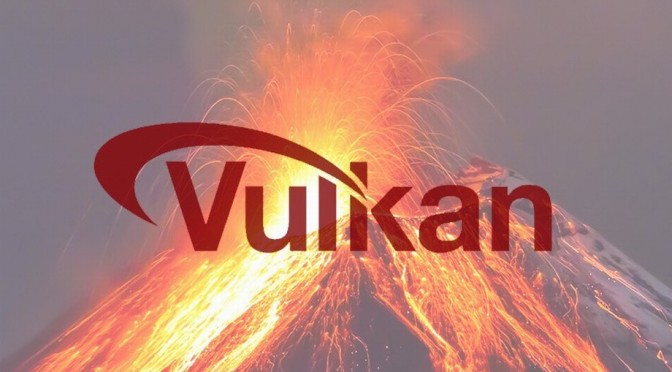The Khronos Group announced today the public release of the Vulkan Ray Tracing provisional extensions, creating the industry’s first open, cross-vendor, cross-platform standard for ray tracing acceleration. Primarily focused on meeting desktop market demand for both real-time and offline rendering, the release of Vulkan Ray.
Ray tracing is a rendering technique that realistically simulates how light rays intersect and interact with scene geometry, materials, and light sources to generate photorealistic imagery. As we’ve seen lately, Ray Tracing is beginning to be practical for real-time applications and games. Vulkan Ray Tracing seamlessly integrates a coherent ray tracing framework into the Vulkan API. Thus, it will enable a flexible merging of rasterization and ray tracing acceleration. Furthermore, Vulkan Ray Tracing will be hardware agnostic. As such, developers can use it on both existing GPU compute and dedicated ray tracing cores if available.
Vulkan Ray Tracing consists of a number of Vulkan, SPIR-V, and GLSL extensions, some of which are optional. The primary VK_KHR_ray_tracing extension provides support for acceleration structure building and management, ray tracing shader stages and pipelines, and ray query intrinsics for all shader stages. VK_KHR_pipeline_library provides the ability to provide a set of shaders which can be efficiently linked into ray tracing pipelines. VK_KHR_deferred_host_operations enables intensive driver operations. These operations include ray tracing pipeline compilation or CPU-based acceleration structure construction to be offloaded to application-managed CPU thread pools.
Below you can find some comments from AMD, NVIDIA, Electronic Arts and Epic Games.
Vulkan Ray Tracing Provisional Specification Comments
Daniel Koch, senior graphics system software engineer at NVIDIA and Vulkan Ray Tracing task sub group chair at Khronos, said:
“There has been strong developer demand for a truly cross-platform ray tracing acceleration API. And now, Vulkan Ray Tracing is here to meet that industry need. The overall architecture of Vulkan Ray Tracing will be familiar to users of existing proprietary ray tracing APIs, which enables straightforward porting of existing ray traced content. However, this framework also introduces new functionality and implementation flexibility.”
Andrej Zdravkovic, senior vice president, software development, AMD, said:
“Standardizing ray tracing in Vulkan is an important step towards making ray tracing available across a wide range of devices, as well as enabling developers to use this technology to its full advantage. AMD intends to provide support for all of the major features in this extension, including ray shading, ray queries, and CPU acceleration structure management. We will be working with developers to ensure great performance from our Vulkan Ray Tracing implementation; these efforts will help us to provide end users with even more visually stunning graphics on AMD Radeon GPUs.”
Sebastian Tafuri, senior rendering engineer at Frostbite, EA, added:
“EA is happy to see the release of the provisional ray tracing extension for Vulkan. Realtime ray tracing is already an important part of game development and it will continue to be in the future. Allowing ray queries from any shader stage is a great feature, which will both simplify integrations and open up the possibility for new techniques while multithreaded host-side building of acceleration structures has the potential to reduce latency and improve the performance of our upcoming game titles.”
Yuriy O’Donnell, rendering engineer, Epic Games, concluded:
“Epic Games has been an active member of the Vulkan Ray Tracing group from the beginning, and we are happy to see the ray tracing extension released to the public. We at Epic Games continue to wholeheartedly support Khronos’s efforts on creating open standards to enhance the end-user experience.”

John is the founder and Editor in Chief at DSOGaming. He is a PC gaming fan and highly supports the modding and indie communities. Before creating DSOGaming, John worked on numerous gaming websites. While he is a die-hard PC gamer, his gaming roots can be found on consoles. John loved – and still does – the 16-bit consoles, and considers SNES to be one of the best consoles. Still, the PC platform won him over consoles. That was mainly due to 3DFX and its iconic dedicated 3D accelerator graphics card, Voodoo 2. John has also written a higher degree thesis on the “The Evolution of PC graphics cards.”
Contact: Email

